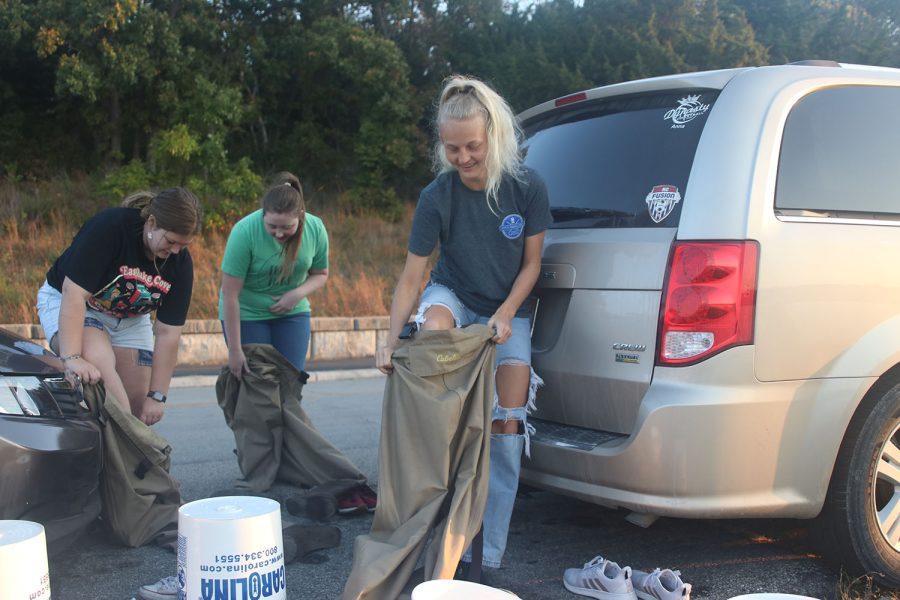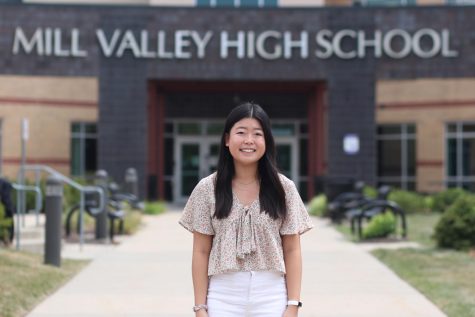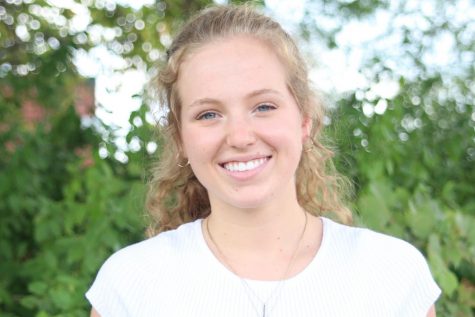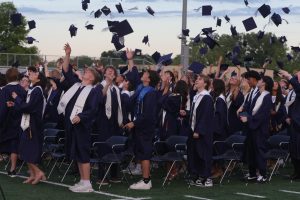Environmental Resources and Wildlife Science harvest water plants at Shawnee Mission Park
Students collected samples of water plants in ponds at Shawnee Mission Park Friday, Oct. 8
October 12, 2021
During the school day Friday, Oct 8, students in science teacher Julie Roberts’ Environmental Resources and Wildlife Science class went to Shawnee Mission Park to collect water plants that they will study. In addition to the Environmental Resources and Wildlife Science class offered, the Plants and the Environment class is another course where students can study, catch and pin different bugs.
Senior Avery Warren explained what her and her classmates were looking for while at Shawnee Mission Park and what they will do with the plants once they are found.
“We were harvesting the water plants that grow in ponds. We harvested some with roots attached and some without,” Warren said. “Then, we take the plants back to school and we’ve been planting them in sand, soil, gravel and mixtures of those. We submerged them in water and we will see how much each group grows.”
The students will also have the opportunity to share their findings with the Kansas Department of Wildlife Parks and Tourism or KDWPT. Roberts explained what exactly the KDWPT is looking for and how students are going to help provide research.
“KDWPT [Kansas Department of Wildlife Parks and Tourism] would like to have a stable supply grown under controlled conditions that can be used to repopulate lakes when populations crash, typically after flooding,” Roberts said. “The students have come up with different growing techniques to test and will continue to gather data through May. It’s very exciting to have an opportunity like this where your research, if successful, will be used to help improve lake water quality in Kansas.”
Harvesting water plants is not the only instance in which Roberts’ students collect different samples and study them. Warren described her favorite thing she has found while in Environmental Resources and Wildlife Science.
“My favorite thing we’ve found was macroinvertebrates. We went down to the creek and caught them in a mesh sheet,” Warren said. “To the naked eye they look like pieces of dirt, but when you put them under the microscope they look hairy and gross. It was interesting to see the different kinds.”
Roberts described what the students in Environmental Resources and Wildlife Science do in addition to going to Shawnee Mission Park, and why she enjoys taking her students outside of the school.
“In Environmental Resources and Wildlife Science we have two bee hives that [students] take care of and maintain,” Roberts said. “So anytime I can get them outside and do hands-on stuff that’s what I like to do.”
Roberts also expressed the importance of teaching students about the environment and to have a greater appreciation for what’s outside.
“My goal in teaching the classes that I teach is to provide students [with] knowledge that they can use in their everyday life so that they can apply it immediately,” Roberts said. “You’re more likely to care about something you understand, so to get kids more involved and interested in the outdoors is ultimately the goal in all the classes I teach.”











